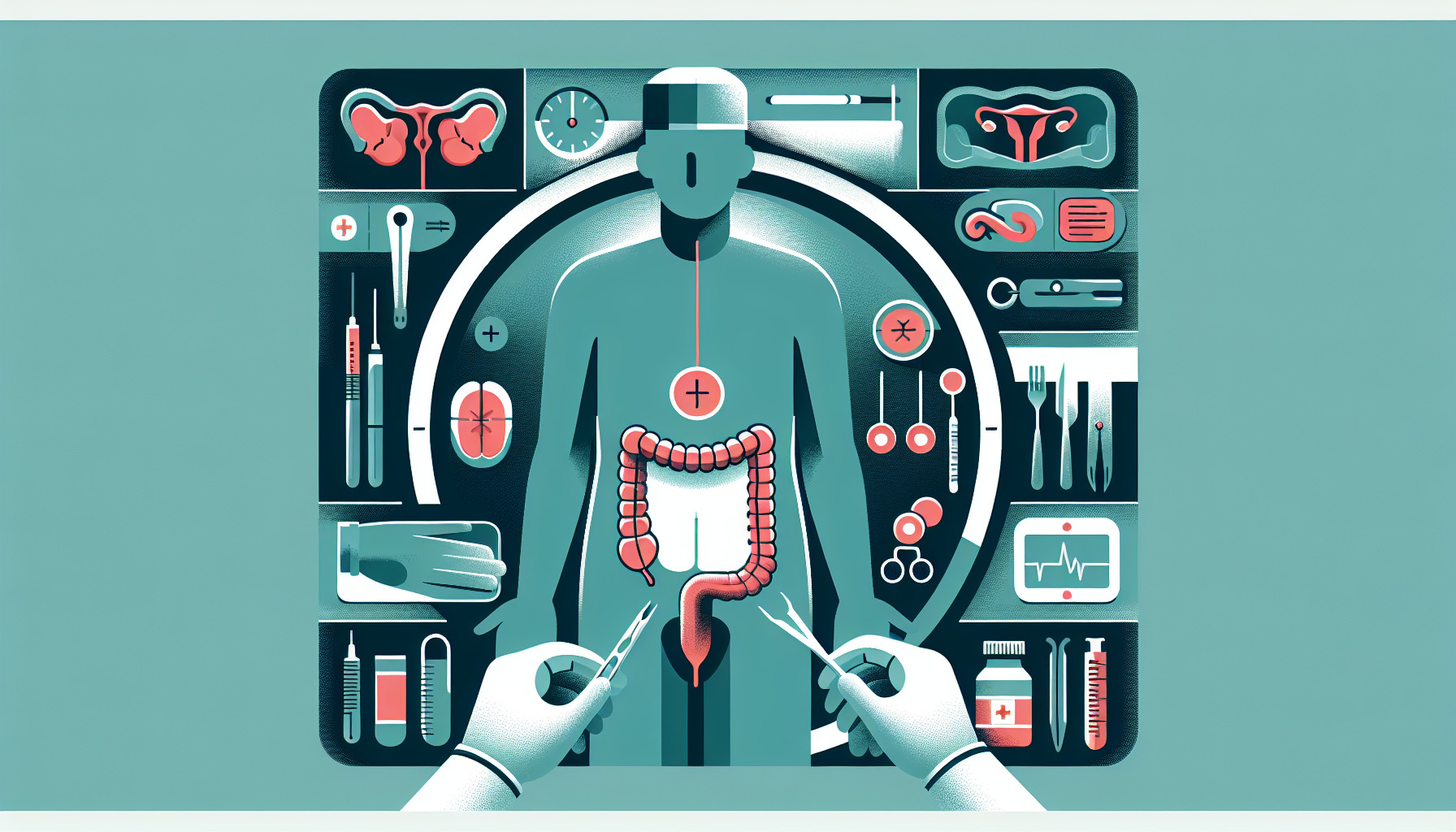Our Summary
This research paper talks about a rare and dangerous type of cancer, known as anorectal malignant melanoma, which affects the lower part of the digestive system. This type of cancer is difficult to diagnose because its symptoms are similar to less serious conditions that affect the same area. The paper discusses a case where this type of cancer was discovered incidentally, after a patient underwent a procedure to remove hemorrhoids. The diagnosis and treatment process for this case was based on what has been written about this type of cancer in previous research.
FAQs
- What is anorectal malignant melanoma and how common is it?
- What difficulties are there in diagnosing anorectal malignant melanoma?
- How was the anorectal malignant melanoma discovered post-hemorrhoidectomy in this case study?
Doctor’s Tip
A doctor might advise a patient undergoing a hemorrhoidectomy to carefully monitor their symptoms post-surgery and to report any unusual changes or new symptoms, such as persistent bleeding, pain, or changes in bowel habits, as these could potentially indicate a more serious condition like anorectal malignant melanoma. Regular follow-up appointments and screenings may also be recommended to monitor for any signs of recurrence or new developments.
Suitable For
Patients who are typically recommended for hemorrhoidectomy are those who have severe or recurrent hemorrhoids that do not respond to conservative treatment measures such as dietary changes, topical medications, or rubber band ligation. These patients may experience symptoms such as severe pain, bleeding, itching, or prolapse of hemorrhoidal tissue. Additionally, patients with large external hemorrhoids or thrombosed hemorrhoids may also be candidates for hemorrhoidectomy. It is important for patients to undergo a thorough evaluation by a healthcare provider to determine if hemorrhoidectomy is the appropriate treatment option for their specific condition.
Timeline
Before hemorrhoidectomy:
- Patient experiences symptoms of hemorrhoids such as rectal bleeding, pain, itching, and swelling.
- Patient seeks medical attention and is diagnosed with hemorrhoids through physical examination and possibly additional tests like a colonoscopy.
- Patient undergoes conservative treatments such as dietary changes, topical medications, and lifestyle modifications.
After hemorrhoidectomy:
- Patient undergoes hemorrhoidectomy surgery to remove the hemorrhoids.
- During the surgery, an incidental finding of anorectal malignant melanoma is discovered.
- Patient undergoes further diagnostic tests such as imaging studies and biopsy to confirm the diagnosis of anorectal malignant melanoma.
- Patient receives treatment for anorectal malignant melanoma, which may include surgery, chemotherapy, and radiation therapy.
- Patient undergoes follow-up appointments and monitoring to assess the effectiveness of treatment and monitor for any recurrence of the tumor.
What to Ask Your Doctor
- What are the risks and benefits of undergoing a hemorrhoidectomy procedure?
- How long is the recovery period after a hemorrhoidectomy?
- What are the potential complications of a hemorrhoidectomy?
- Will the hemorrhoids come back after the surgery?
- Are there any alternative treatment options for hemorrhoids?
- How can I manage pain and discomfort after the hemorrhoidectomy?
- How often will I need to follow up with you after the surgery?
- Are there any dietary or lifestyle changes I should make to prevent future hemorrhoids?
- What signs or symptoms should I watch out for that may indicate a complication after the surgery?
- Are there any long-term effects or risks associated with having a hemorrhoidectomy?
Reference
Authors: Kozan R, Akpinar O, Toker M. Journal: Acta Med Port. 2024 Jul 1;37(7-8):556-559. doi: 10.20344/amp.21262. Print 2024 Jul 1. PMID: 38785172
